15 TALES OF EMERGING TECHNOLOGIES
a greedy king,
a love story for a smart city,
the first fully objective concert hall,
proposals for a new calendar,
my grandmother’s sunset and a solar park on vacation,
a theater piece for four neighbours and a sentient house,
an attempt to measure when summer hits Vienna,
a robot to deliver bad news,
furniture for self-hosting,
a lamp for two,
three make-up robots,
a mountain made of glass,
a measuring tool for the year 2121,
a sanctuary for our digital minds,
and three games to play with a search engine.
a greedy king,
a love story for a smart city,
the first fully objective concert hall,
proposals for a new calendar,
my grandmother’s sunset and a solar park on vacation,
a theater piece for four neighbours and a sentient house,
an attempt to measure when summer hits Vienna,
a robot to deliver bad news,
furniture for self-hosting,
a lamp for two,
three make-up robots,
a mountain made of glass,
a measuring tool for the year 2121,
a sanctuary for our digital minds,
and three games to play with a search engine.
︎︎︎ ABOUT
︎︎︎ WORK (Portfolio view)
︎︎︎ SHOP
︎︎︎ (NEWS)LETTER
On now:
AUT NOW
18.9.2024—18.5.2025
MAK Contemporary
Knit & Weave
2.5.-1.6.2025
Schloss Hollenegg
︎︎︎ WORK (Portfolio view)
︎︎︎ SHOP
︎︎︎ (NEWS)LETTER
On now:
AUT NOW
18.9.2024—18.5.2025
MAK Contemporary
Knit & Weave
2.5.-1.6.2025
Schloss Hollenegg
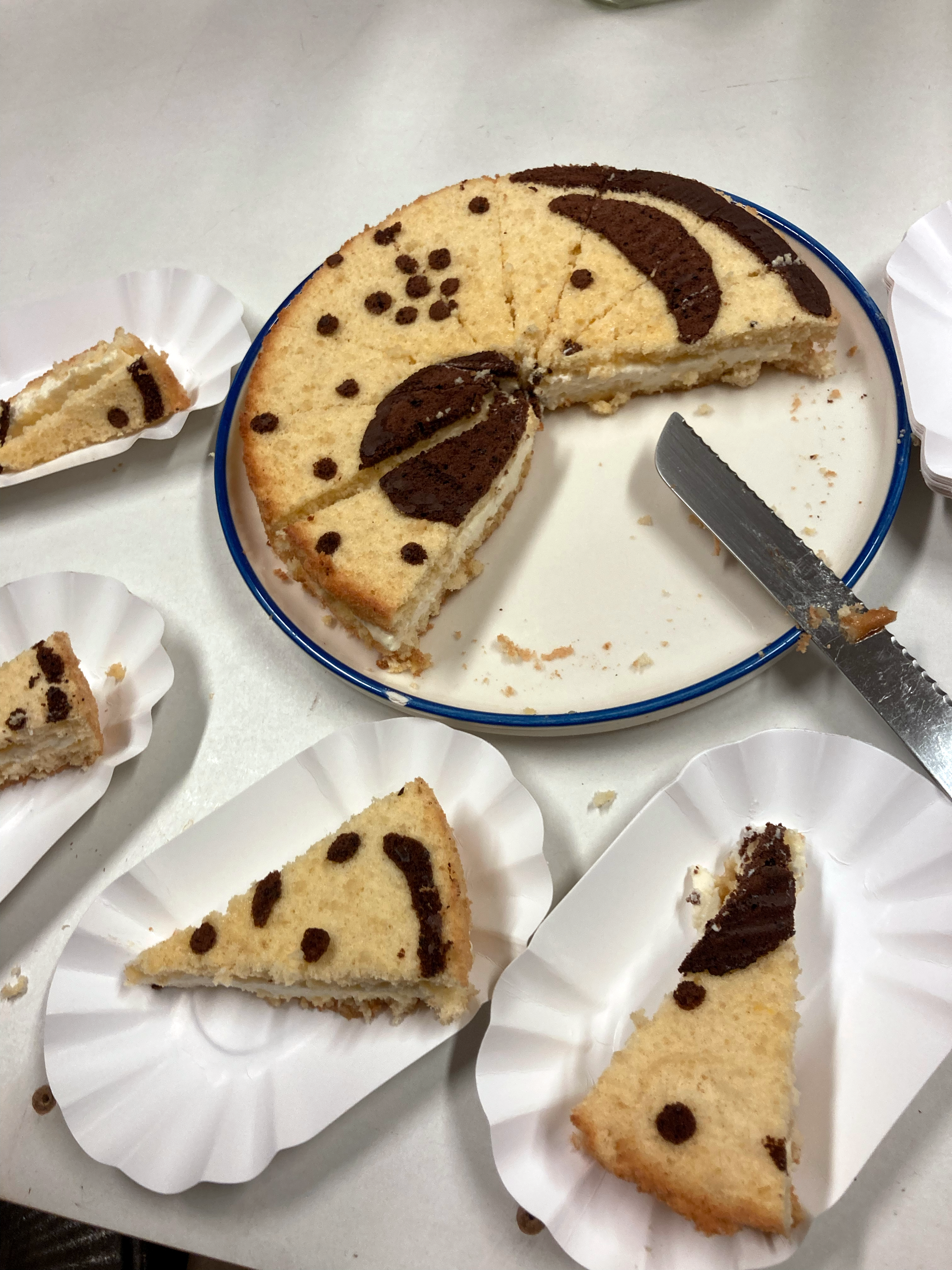
Himmelsscheibe-von-Nebra-Kuchen
INSTALLATION
My favorite measuring instrument is the sextant (this hasn’t always been the case). I love the interplay of its parts: the sight tube, the horizon mirror, the index mirror mounted to rotate on the alidade, the light filters that fold in and out, the degree scale. The best part is the sight window: it is halved by the first mirror, then further quartered by the horizon, and in the middle appears either the half sun or the North Star.
The installation realised with the assistance of Benedikt Rau is a first implementation of a walk-in sextant. Different pieces of furniture take over the role of the five functions of a sextant.
Design in Gesellschaft,
Jan 25 - Feb 15 2025
supported by: bmkoes
Photos: Marlene Mautner
Artificial Horizon
My favorite measuring instrument is the sextant (this hasn’t always been the case). I love the interplay of its parts: the sight tube, the horizon mirror, the index mirror mounted to rotate on the alidade, the light filters that fold in and out, the degree scale. The best part is the sight window: it is halved by the first mirror, then further quartered by the horizon, and in the middle appears either the half sun or the North Star.
The installation realised with the assistance of Benedikt Rau is a first implementation of a walk-in sextant. Different pieces of furniture take over the role of the five functions of a sextant.
Design in Gesellschaft,
Jan 25 - Feb 15 2025
supported by: bmkoes
Photos: Marlene Mautner
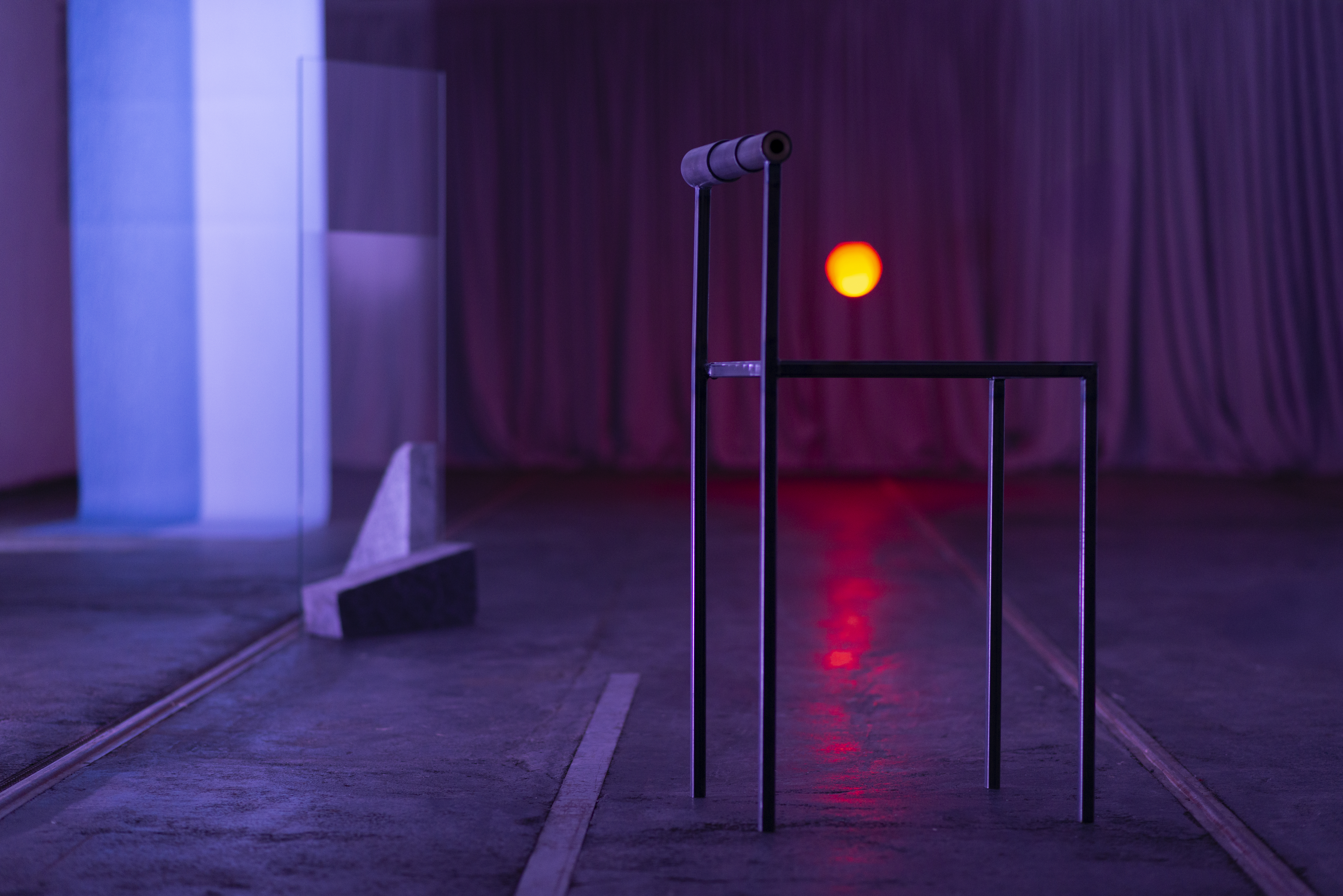

This object is not a sextant, but an Artificial Horizon by Davis Instruments, “which answers the need of every sextant user who cannot depend on a natural sea horizon”.
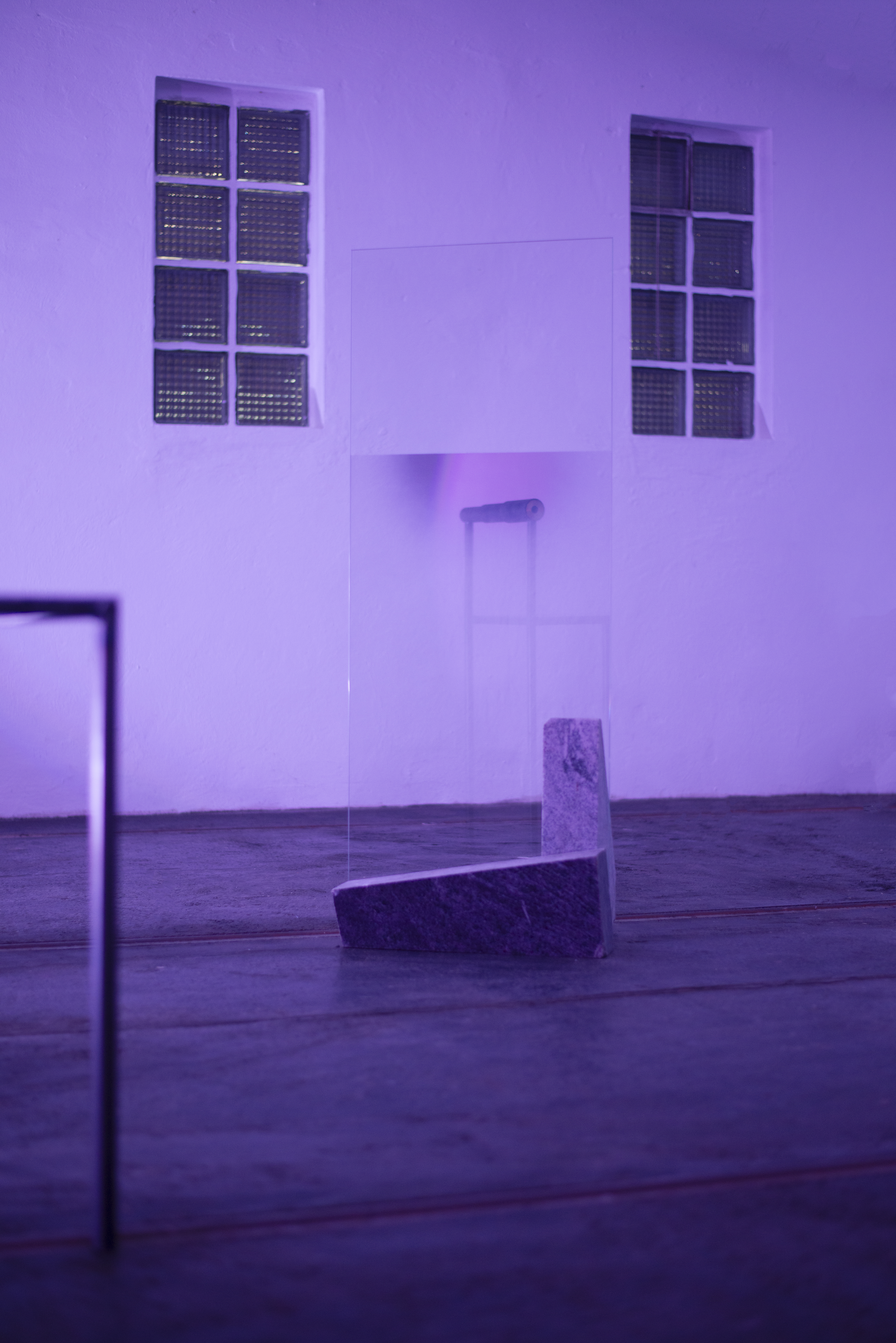
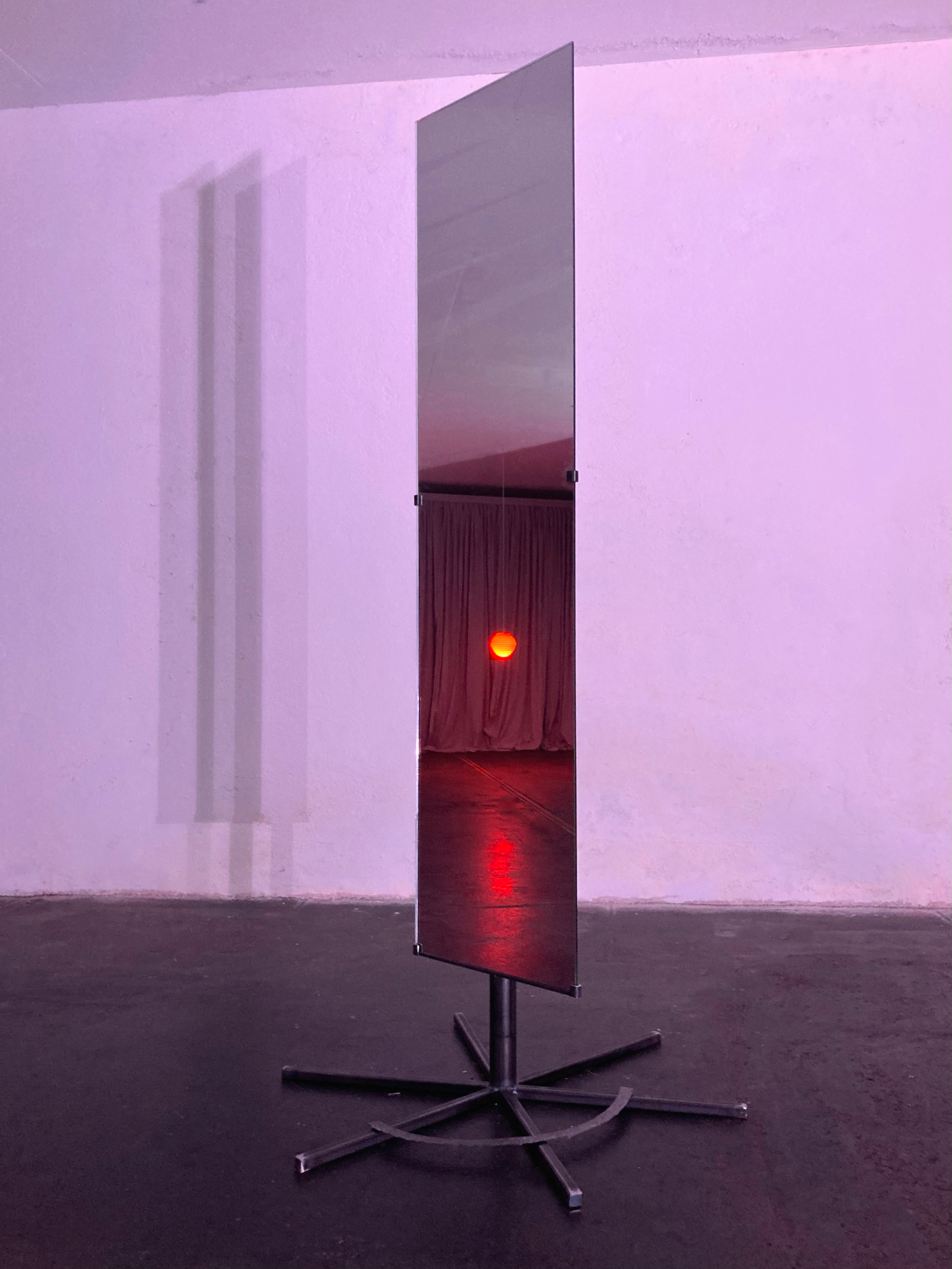
OBJECT
Eckenschutz
As a mother I’ve become sensitive to sharp edges and corners in the height of my child’s head, and like many other adults, I’ve developped a reflex to cover them with my hands to avert accidents. I decided to translate these little acts of care into table accessories. The many stages of this project have seen a series of sketches, two archive tables showcasing existing corner protections and two desks produced for the exhibition “Projekt Berggasse 19” in collaboration with cabinetmaker Clemens Schmidberger, which feature hands in brass and in silver.
![]()
![]()
![]()
![]()
Eckenschutz
As a mother I’ve become sensitive to sharp edges and corners in the height of my child’s head, and like many other adults, I’ve developped a reflex to cover them with my hands to avert accidents. I decided to translate these little acts of care into table accessories. The many stages of this project have seen a series of sketches, two archive tables showcasing existing corner protections and two desks produced for the exhibition “Projekt Berggasse 19” in collaboration with cabinetmaker Clemens Schmidberger, which feature hands in brass and in silver.
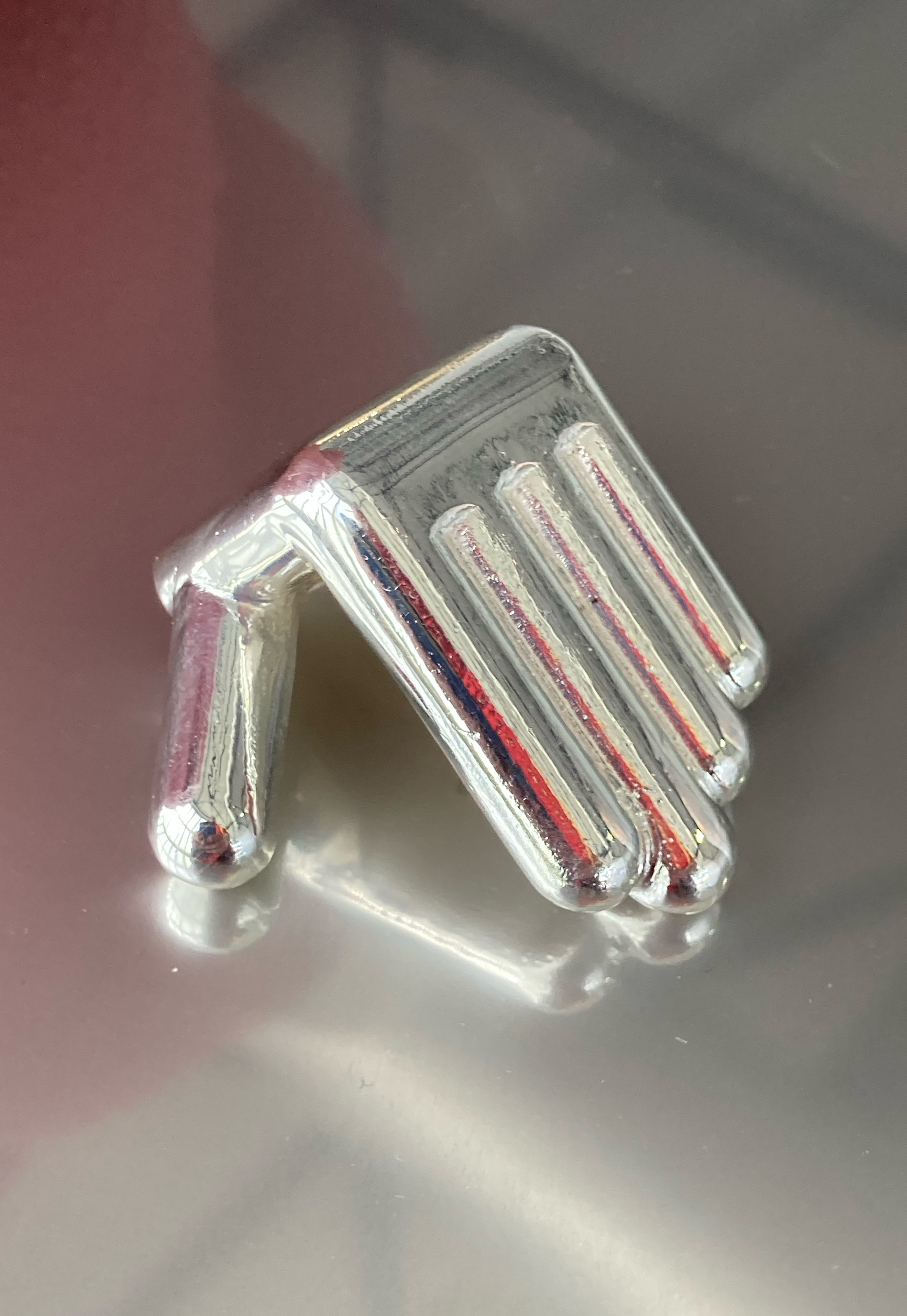
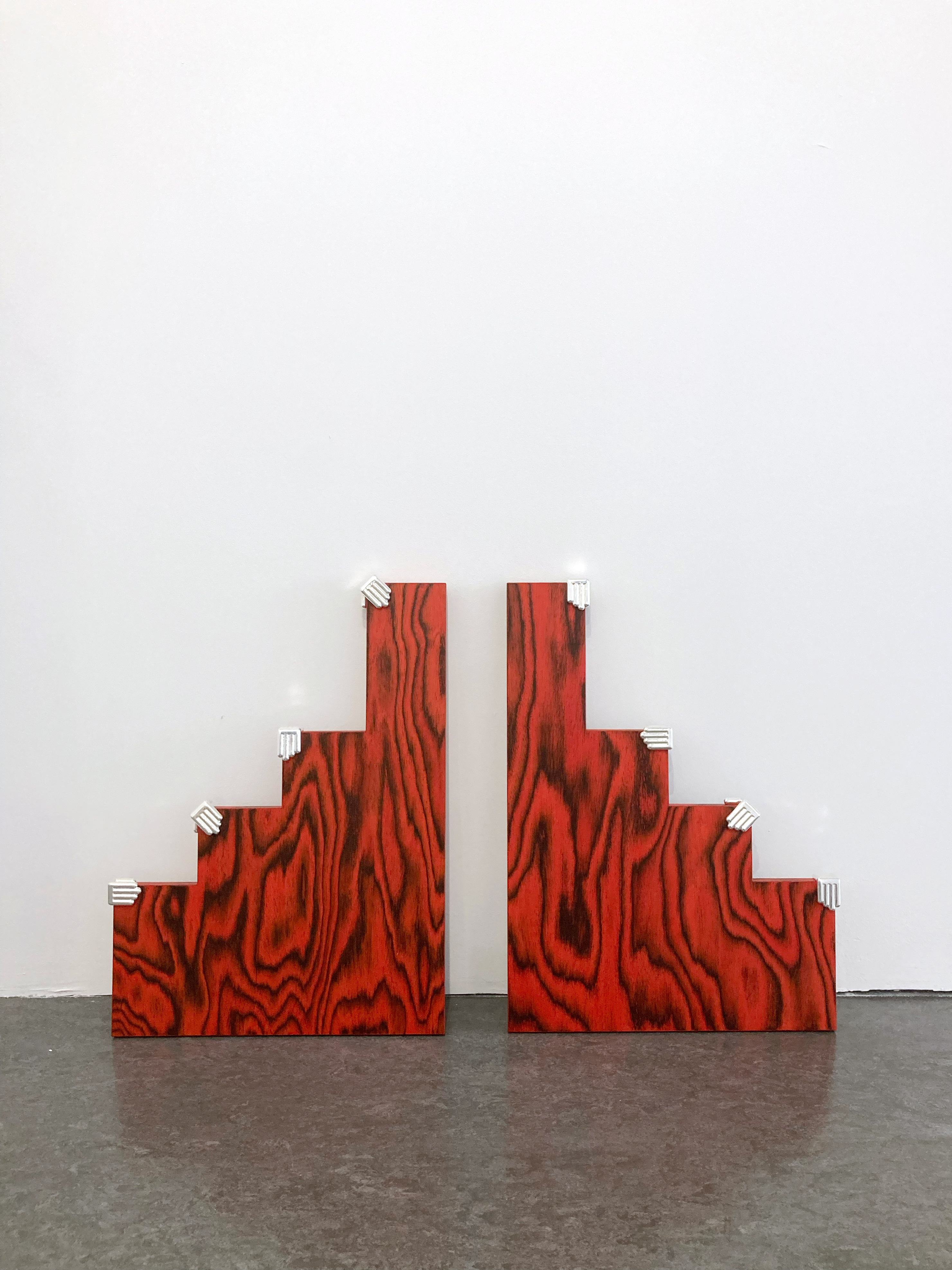
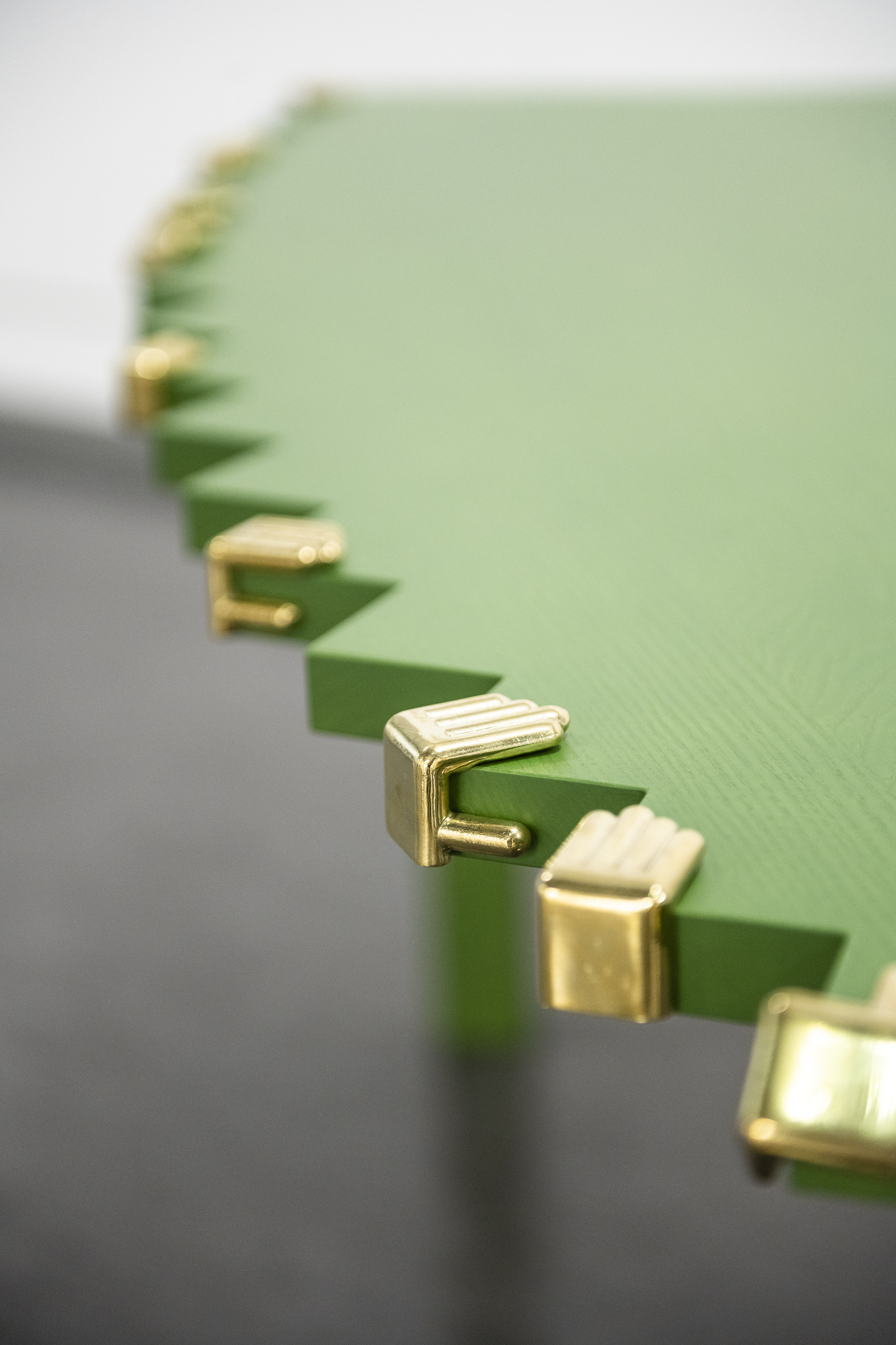
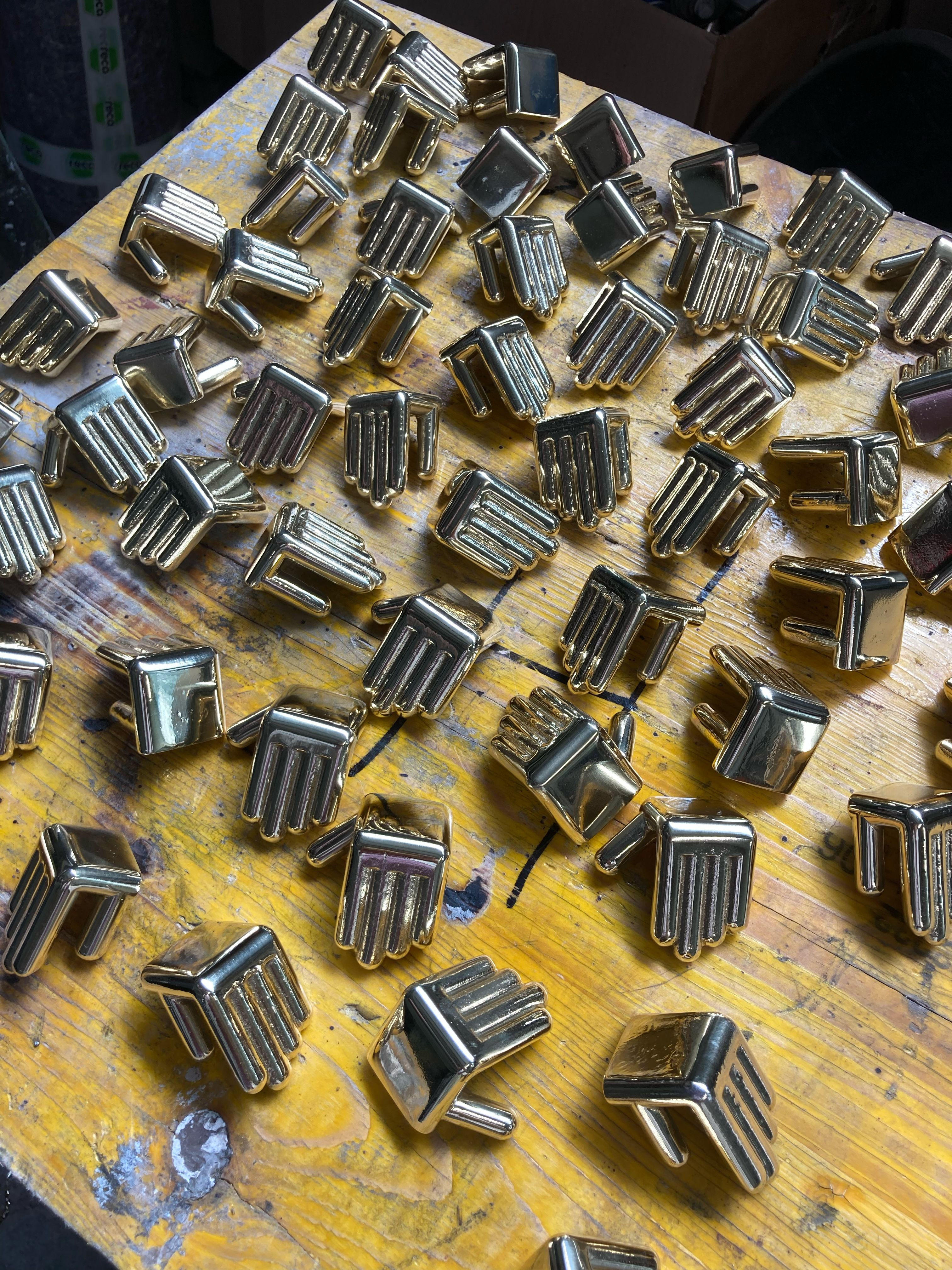
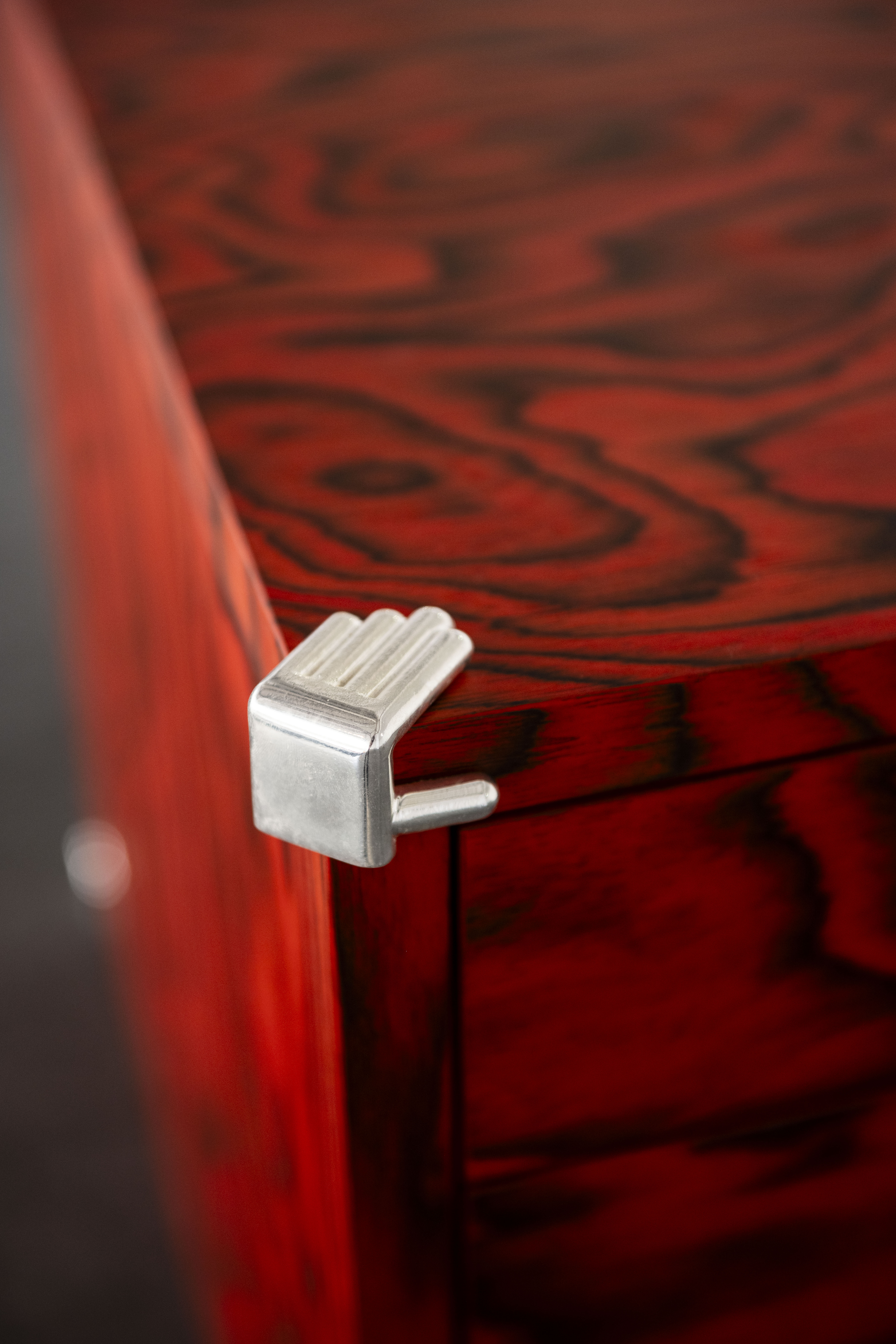
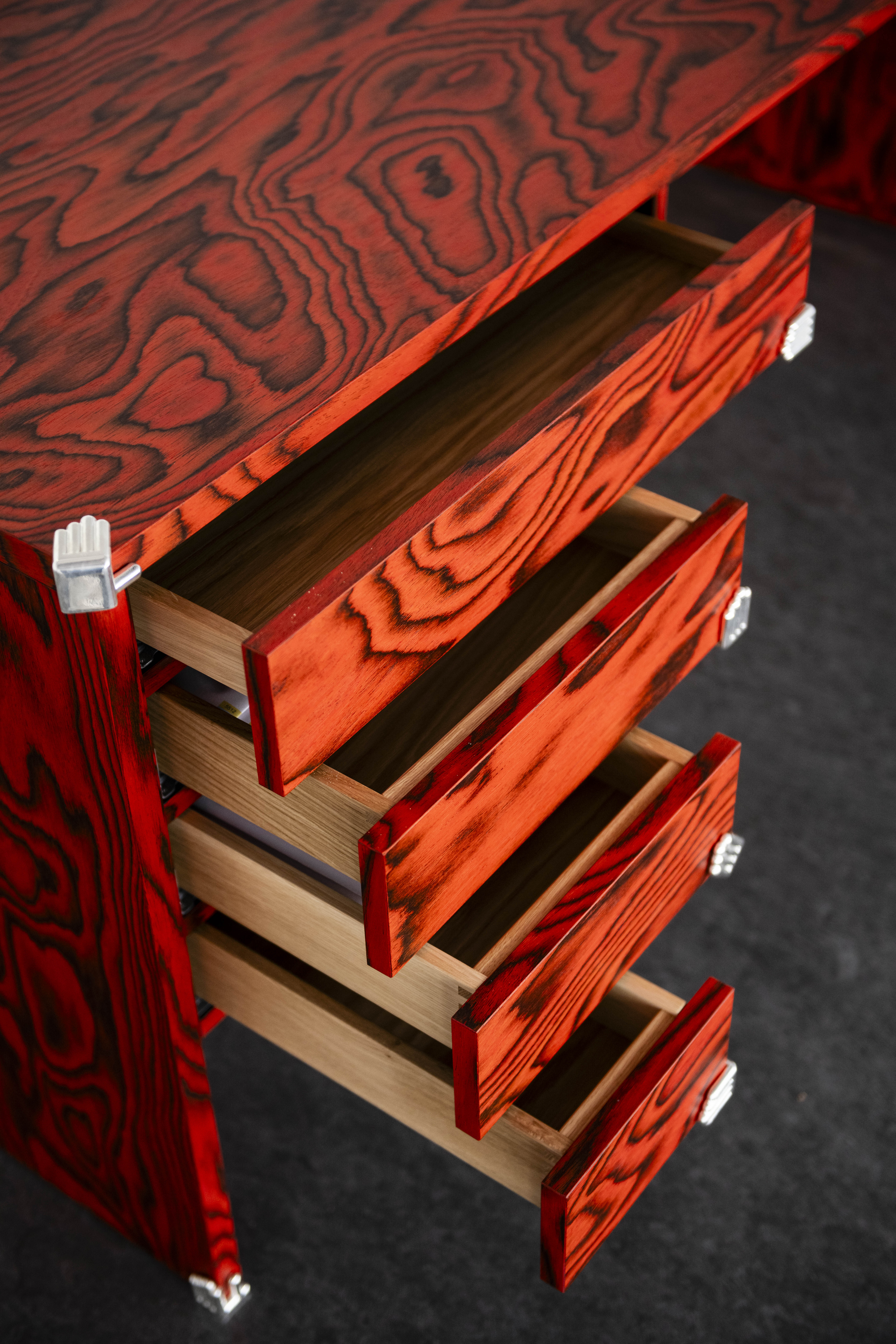
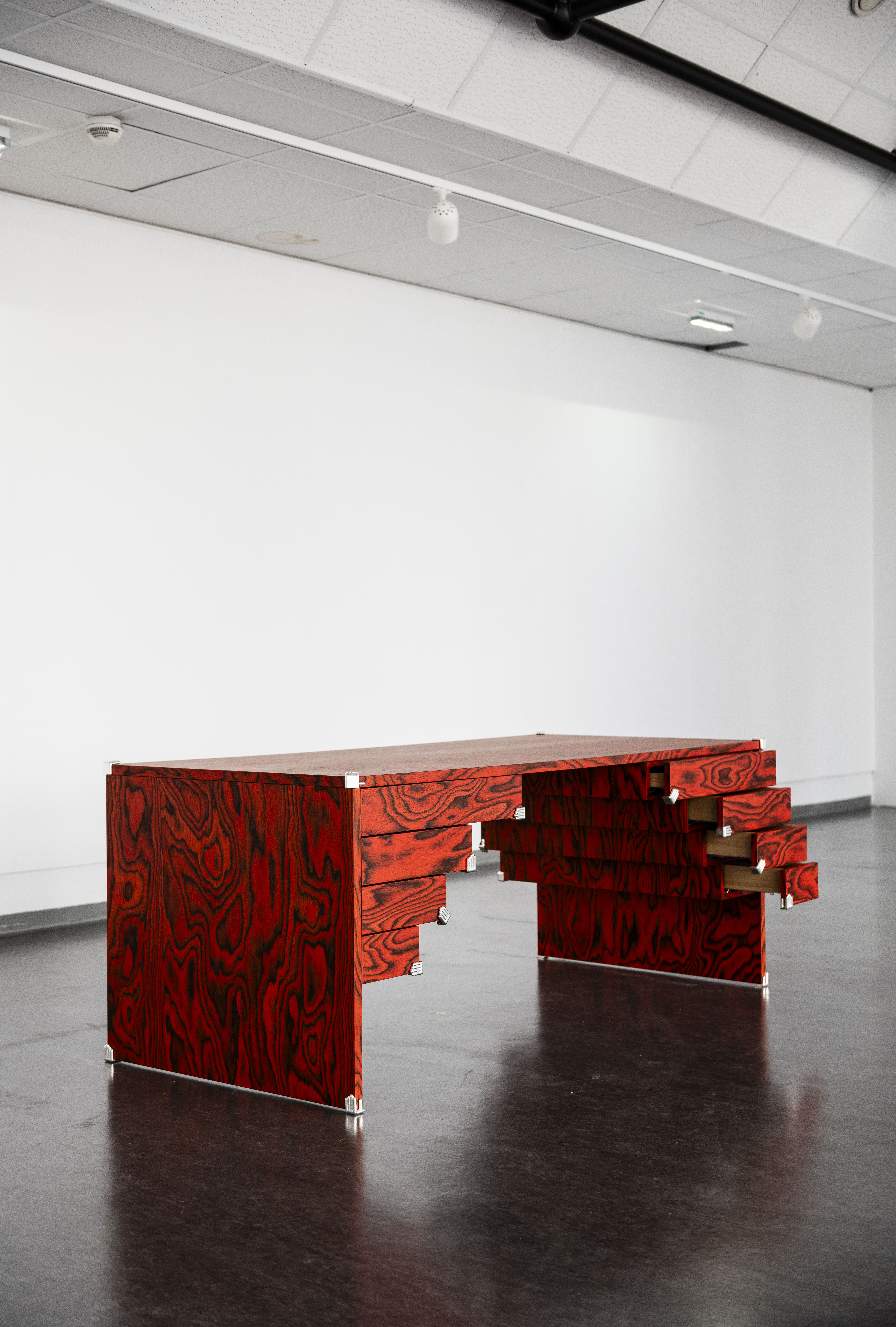
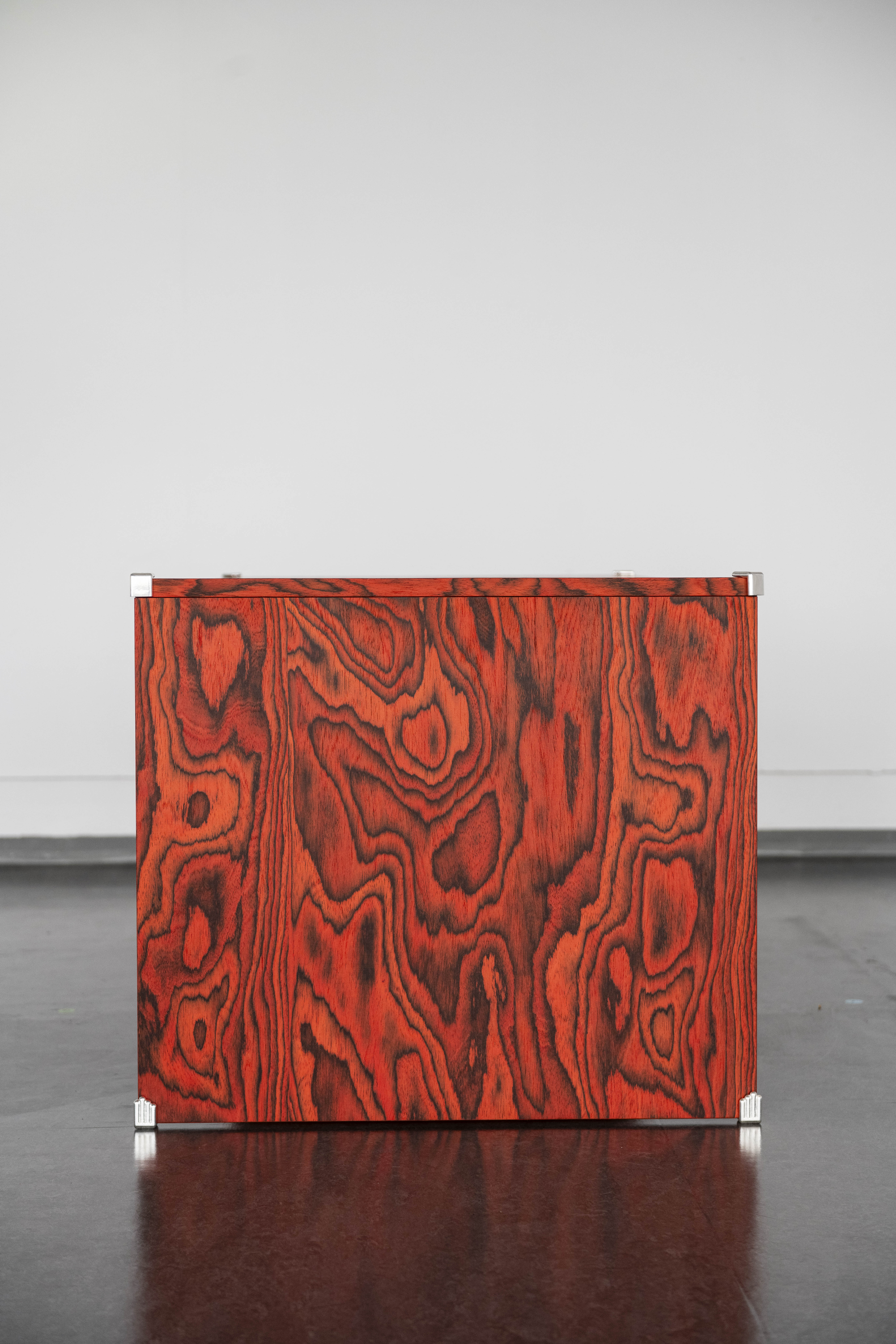
Image: Philipp Podesser for 24th Arts
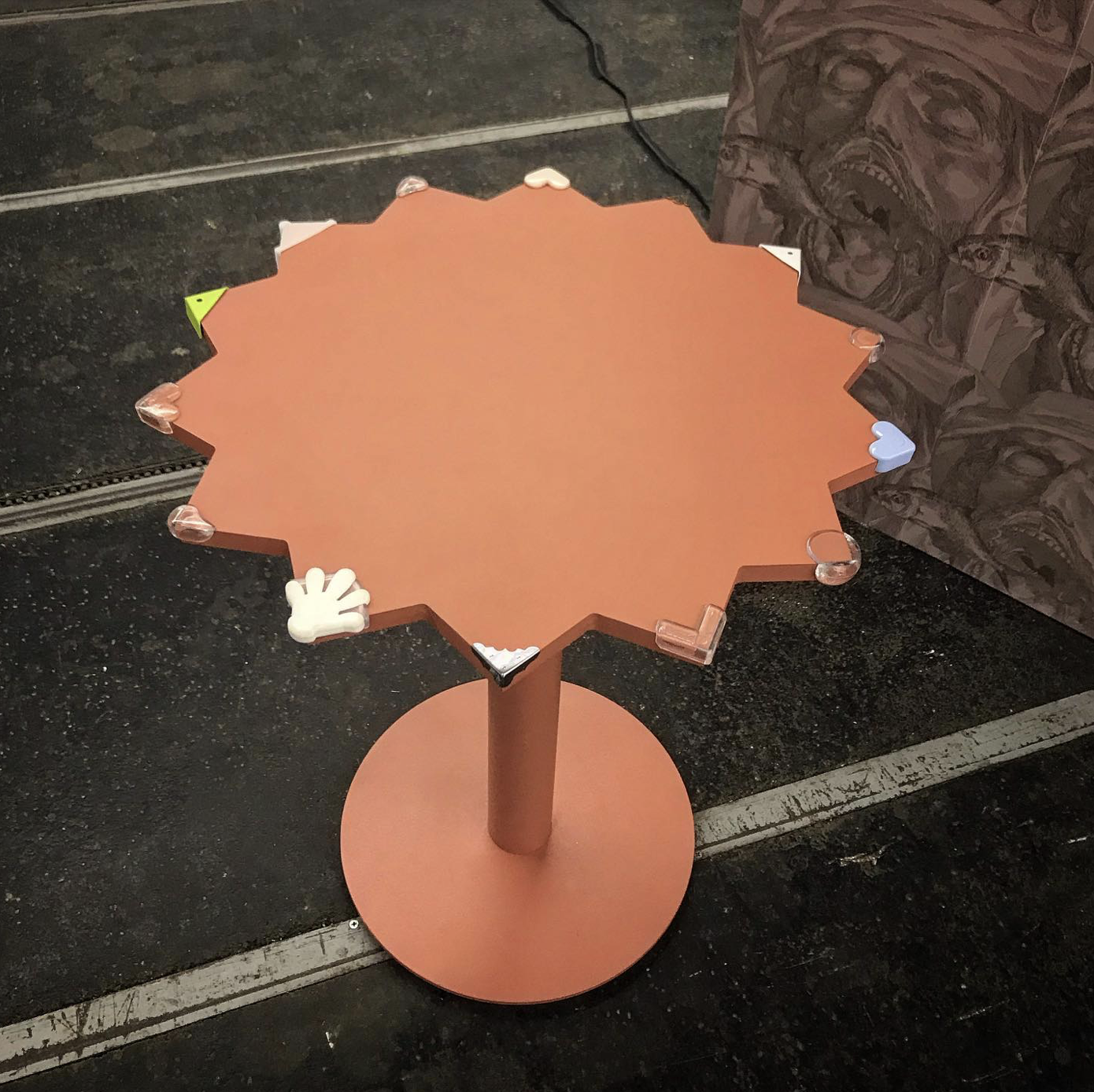
The Archive Table


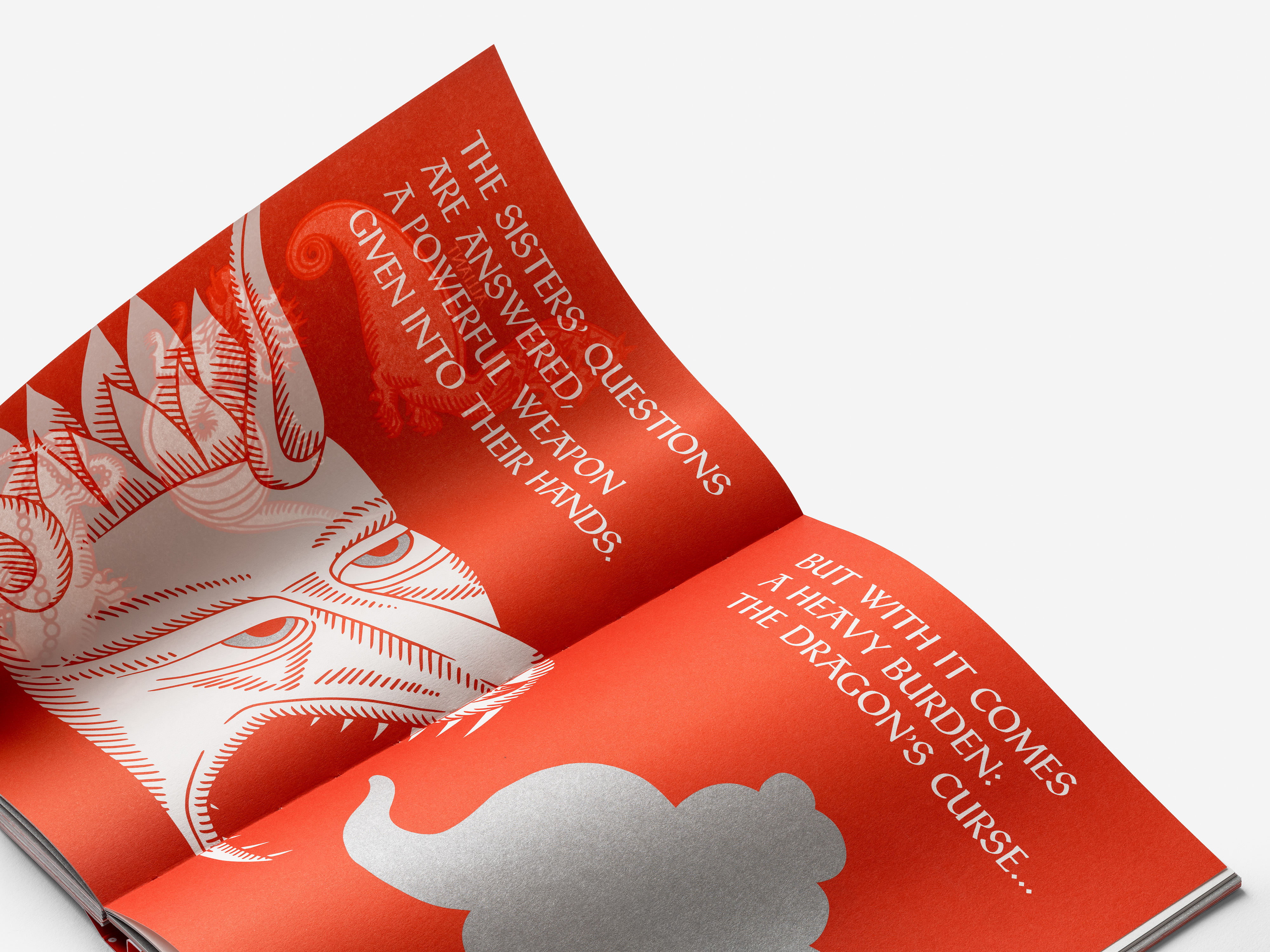 FAIRYTALE
FAIRYTALEKing GAFA and the Magical 0-1 Crop
King GAFA and the Magical 0-1 Crop is a modern fairy tale about privacy in the digital age. Charming yet unsparing, it shows who makes the rules and how different groups, from politicians — the elders — to the simple farmer, from the hermit in the Dark Forest to the data broker, are entangled with each other. The fairy tale questions our online habits and invites us to participate in the discourse around “digital sovereignty”. The project aims to explore the great potential of design as a tool for promoting more democracy, making complex content accessible and exciting for a broad target group, and empowering enlightened, informed citizens to stand up for their rights.
The book is based on the project and animated fairy tale by: Johanna Pichlbauer, Fabio Hofer, Felix Lenz, Jekaterina Shipilenko
Author and editor of the book: Johanna Pichlbauer
Illustration: Johanna Pichlbauer, Jekaterina Shipilenko
Art direction and design: Maša Poljanec, Ivana Borovnjak
Print: Kerschoffset
August 2024, English
17 x 23,5 cm, 124 pages, 300 copies
Offset, soft cover
ISBN 978-953-8369-23-0
︎ Karla Jurić
︎ King GAFA – The Book is out! Send me a note if you would like to buy it or buy it online here: http://oazabooks.com/

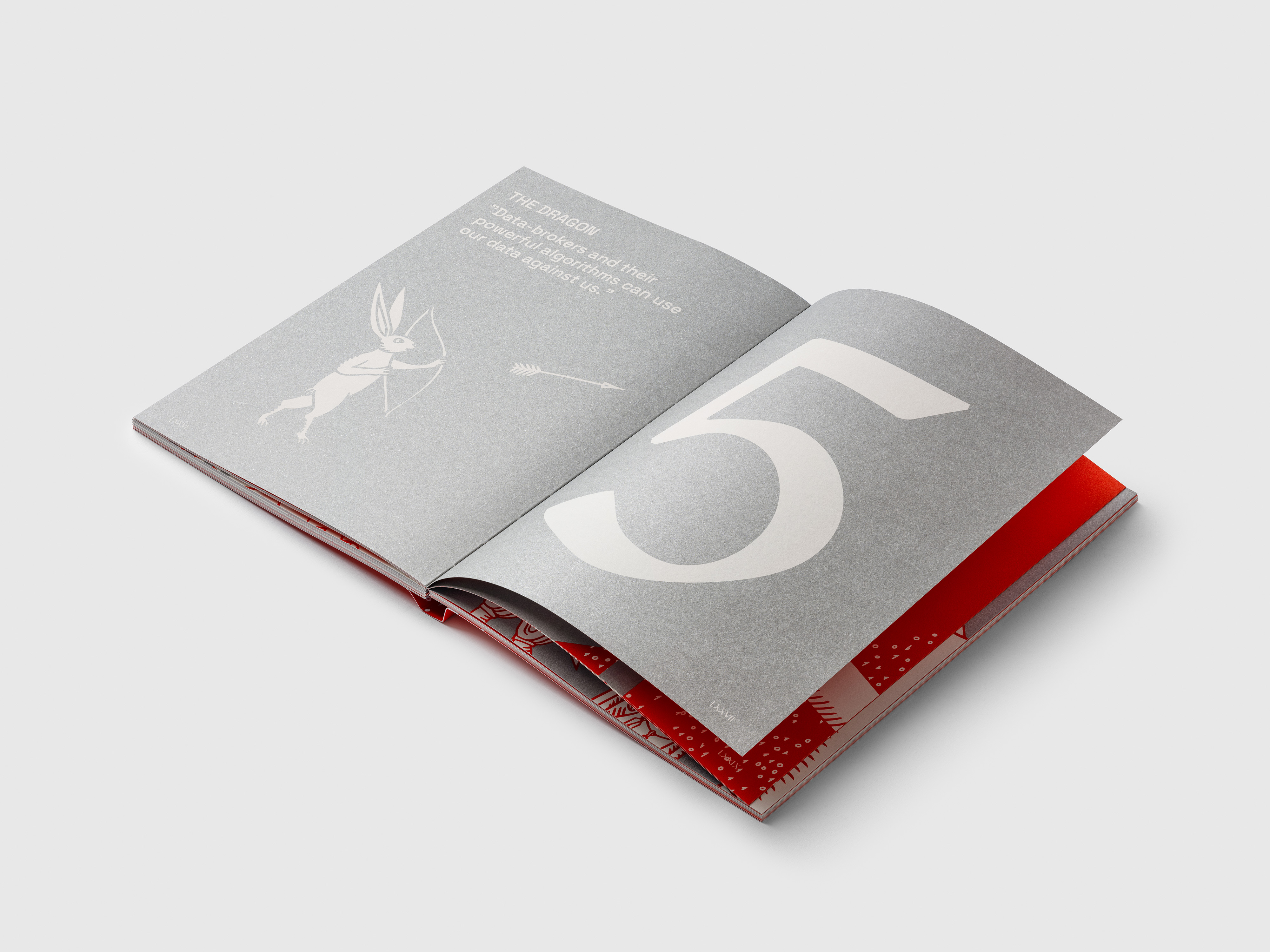

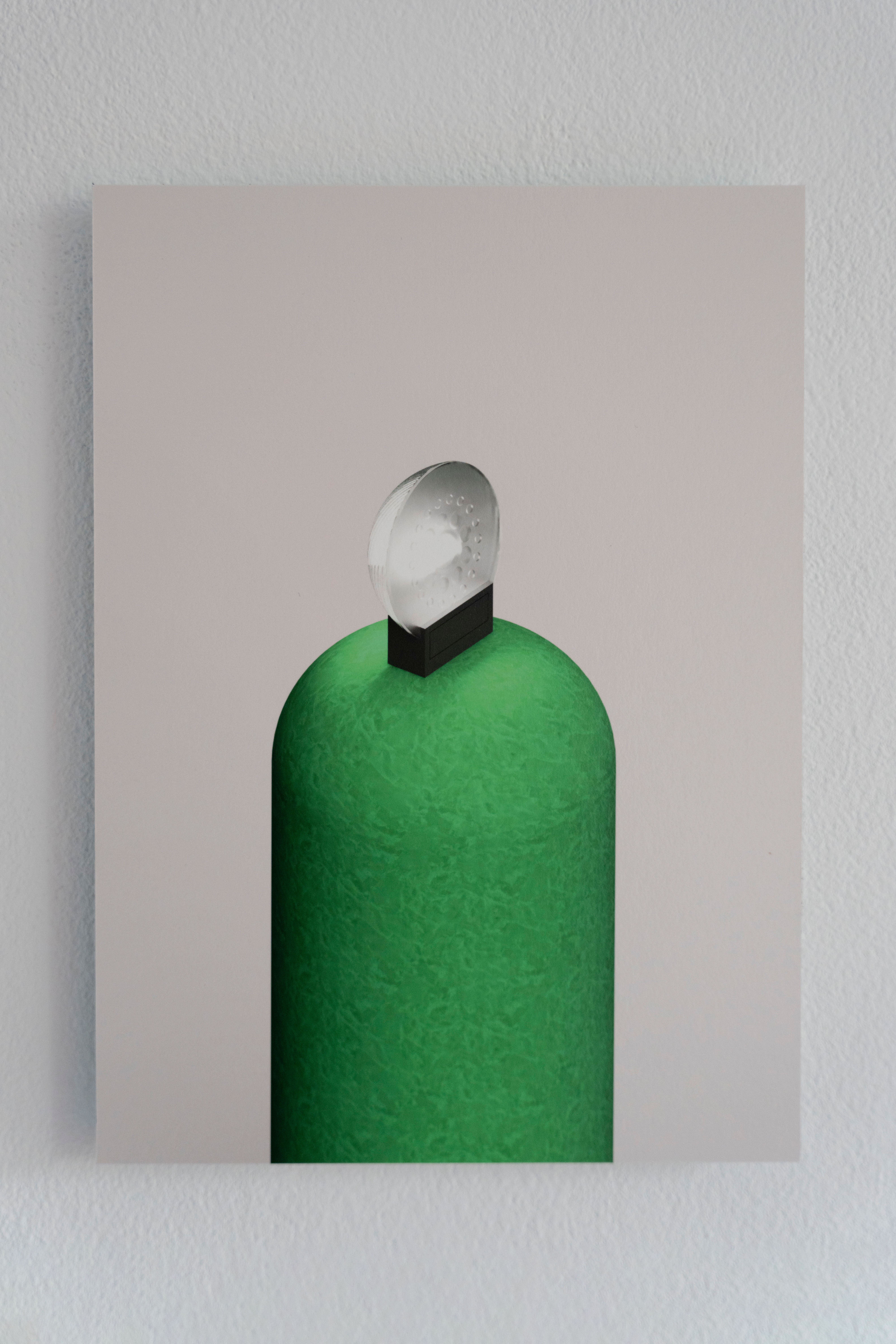








SERIES
A series of prints for the exhibition All Watched Over By Machines Of Loving with Julia Haugeneder
They are round or angular or lemon squeezer shaped or oval or pyramid-shaped. Little precious gems in the suburban wasteland where every house looks like the next. If you own such a house, you might have a radio key to electronically start the motor of the large fence gate. And if you have such a fence gate, you also have a light guard. It starts (because it has to, by law, and because it wants to, by design) to rotate its light, and rejoices in your coming home. If no one else does, this might comfort you. ALL WATCHED OVER BY MACHINES OF LOVING GRACE.
Photos: Rea Djurovic
Exhibited: Stiege 1zwei3, October 2024
Vorstadtkobolde 1-9
A series of prints for the exhibition All Watched Over By Machines Of Loving with Julia Haugeneder
They are round or angular or lemon squeezer shaped or oval or pyramid-shaped. Little precious gems in the suburban wasteland where every house looks like the next. If you own such a house, you might have a radio key to electronically start the motor of the large fence gate. And if you have such a fence gate, you also have a light guard. It starts (because it has to, by law, and because it wants to, by design) to rotate its light, and rejoices in your coming home. If no one else does, this might comfort you. ALL WATCHED OVER BY MACHINES OF LOVING GRACE.
Photos: Rea Djurovic
Exhibited: Stiege 1zwei3, October 2024
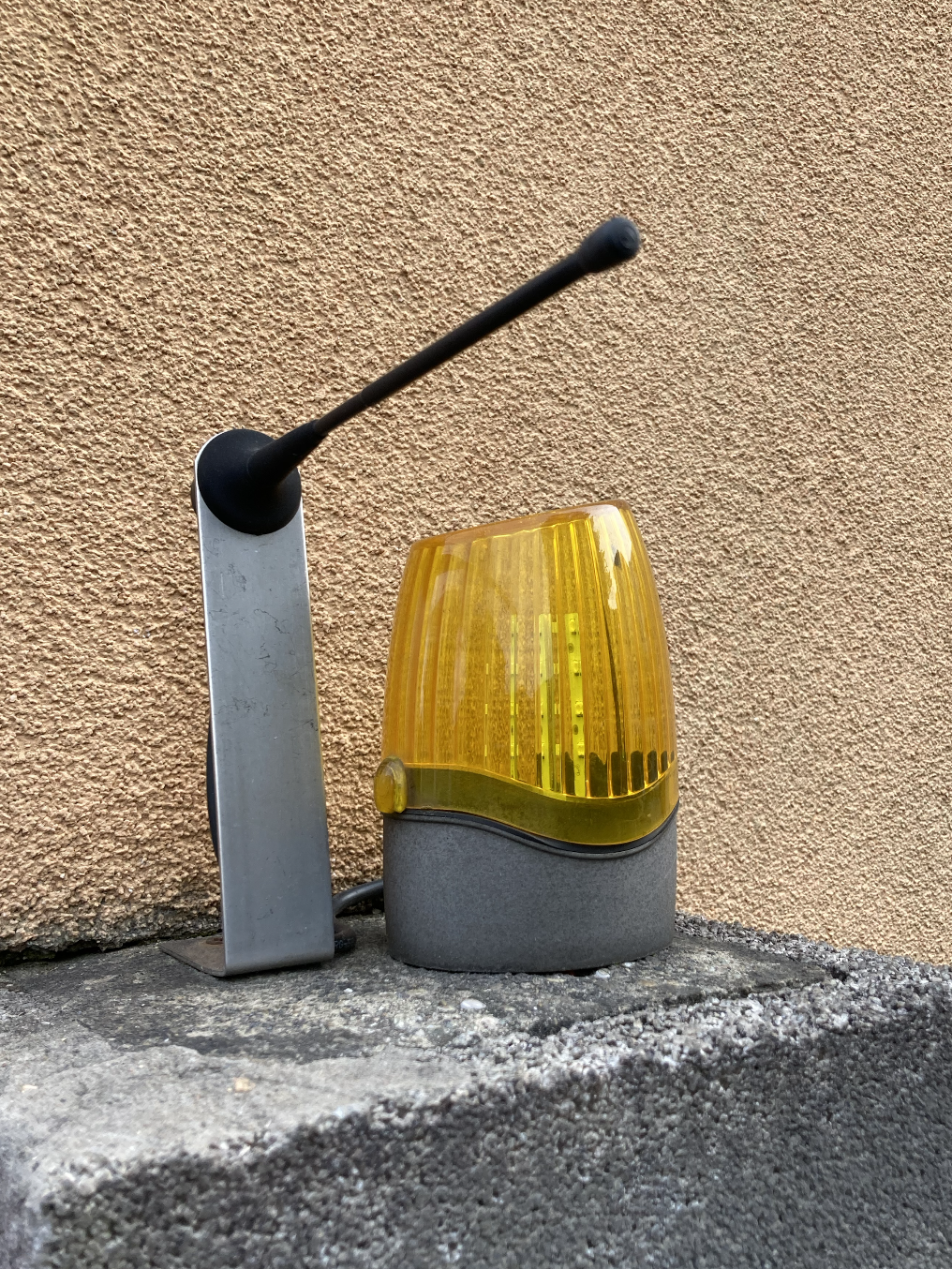
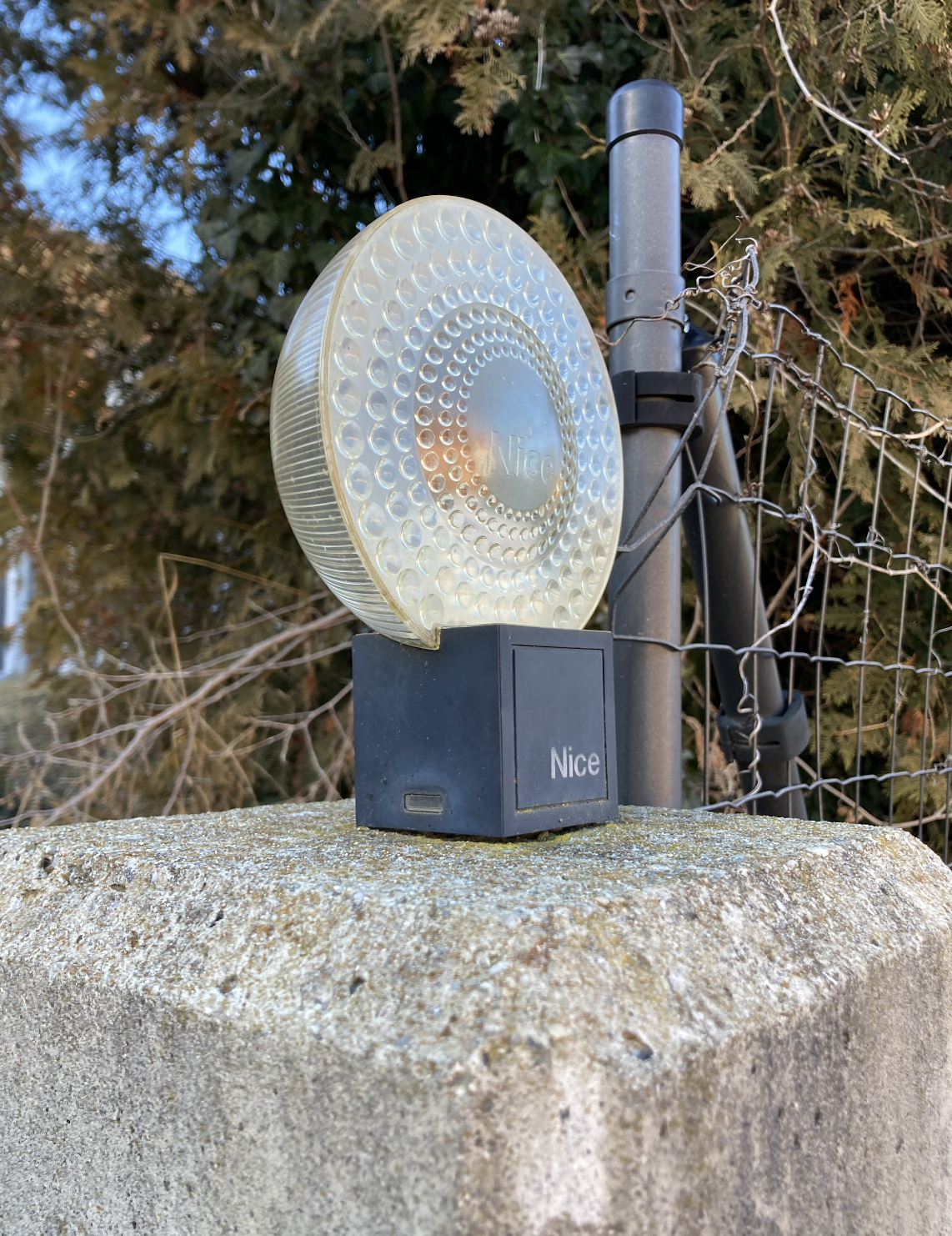
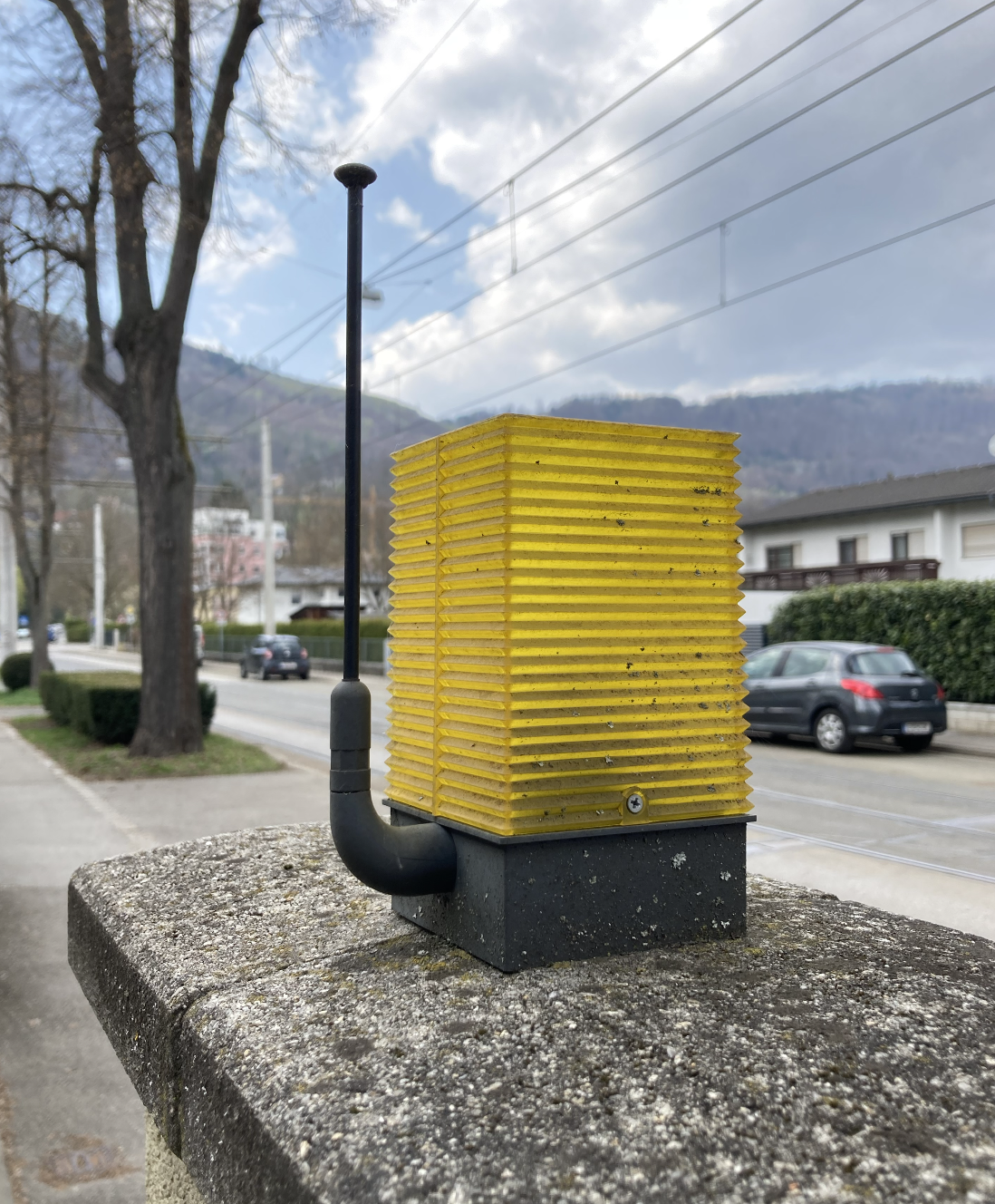

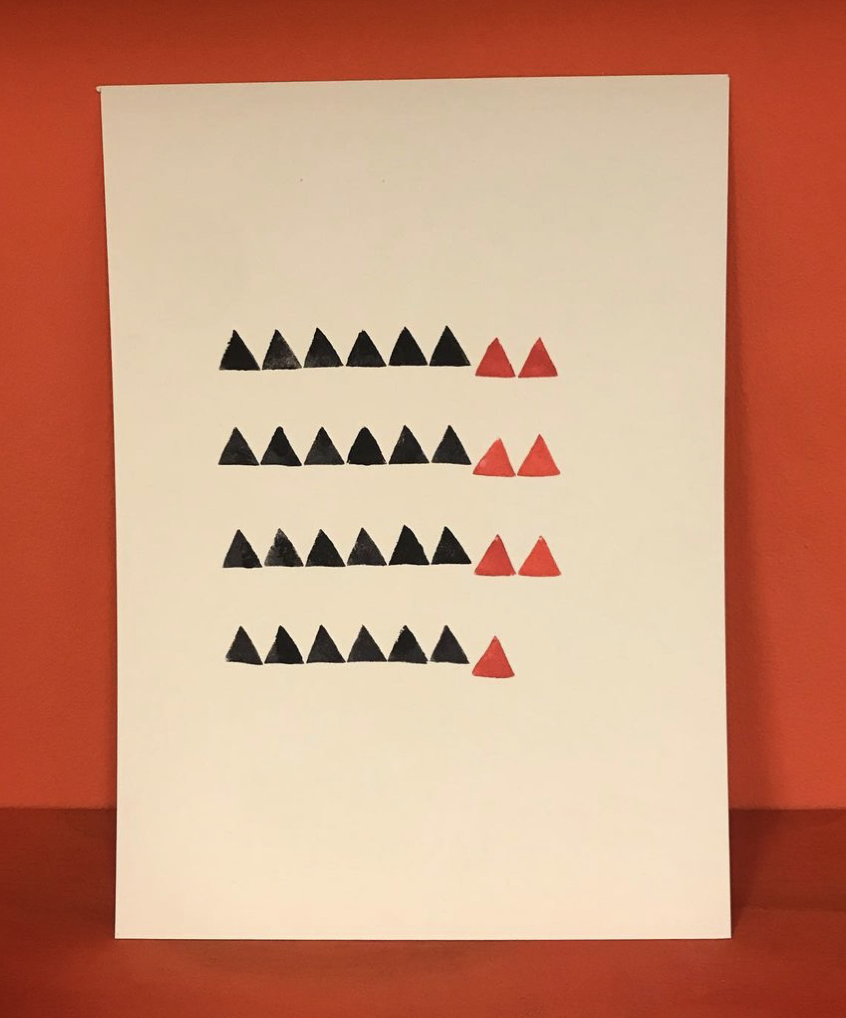
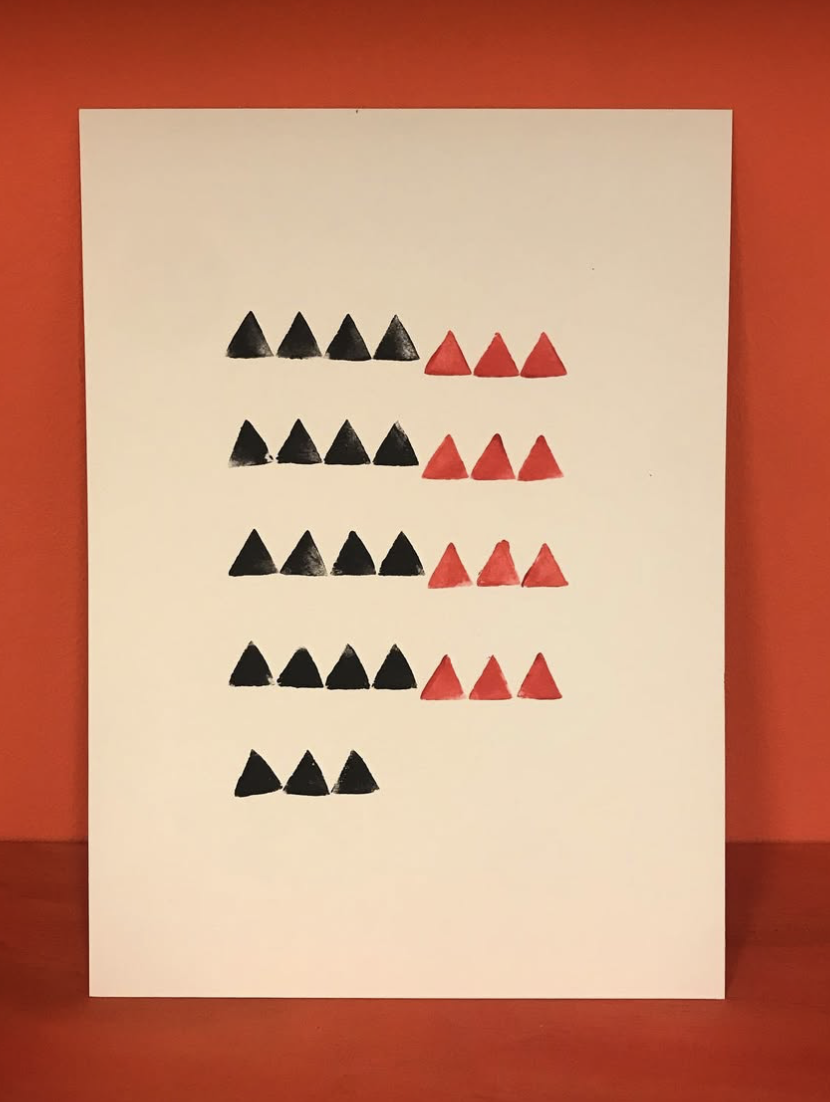
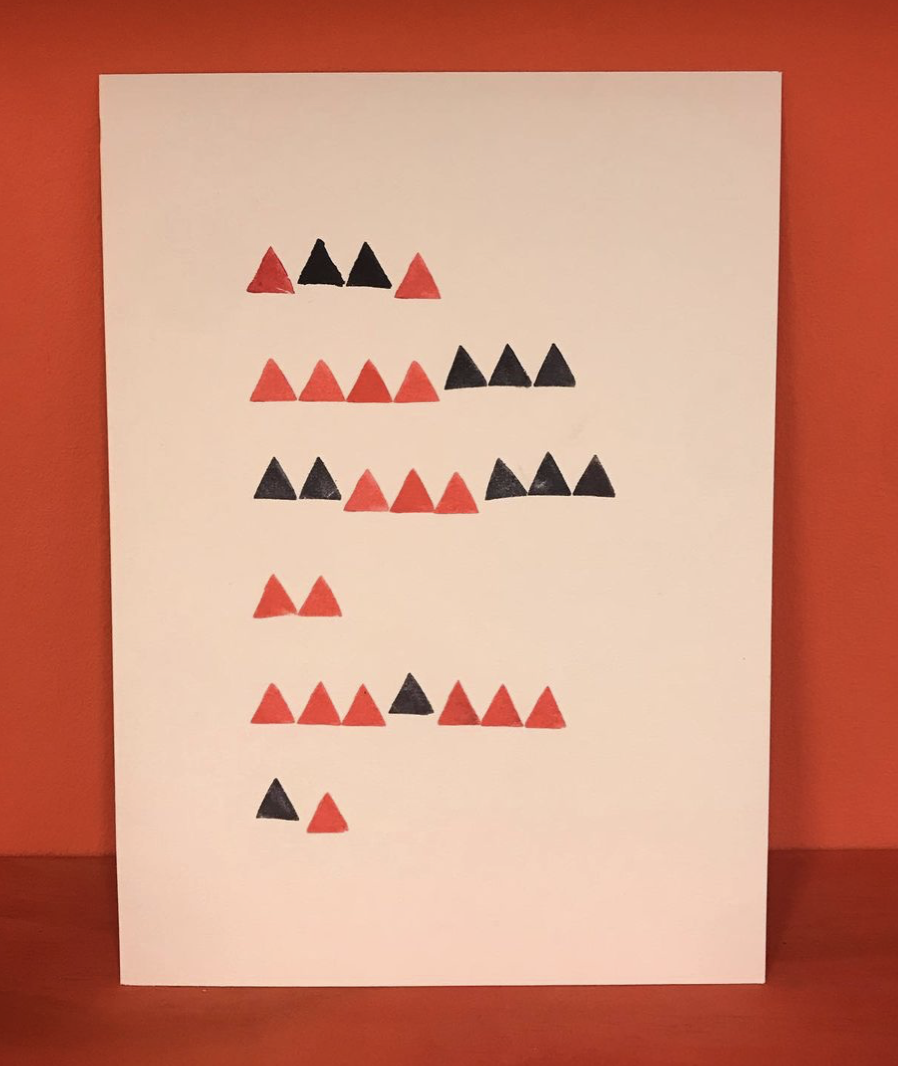
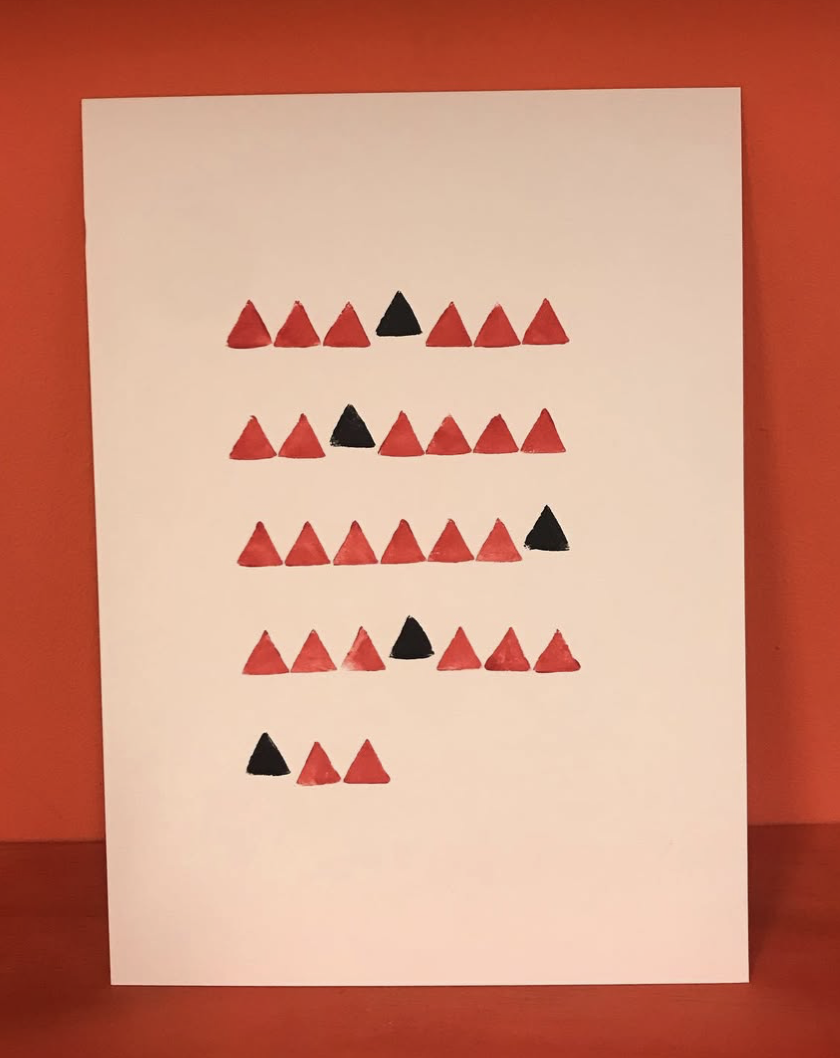
RESEARCH & STUDY
"In diese Bauernkalender wurde die Dreieckkerbe als Zeichen für die fortlaufenden Tage im Jahr aufgenommen. In frühen Ausgaben erscheint das Dreieck für die Wochentage in schwarzer Farbe und mit roter Farbe für die Sonn- und Feiertage. Später wird die schwarze Farbe der Dreiecke für die Werktage beibehalten, die Feiertage erscheinen rot und etwas tiefer gesetzt." aus: Der Steirische Mandlkalender, Seine Zeichen und Bilder.
Mandlkalender
"In diese Bauernkalender wurde die Dreieckkerbe als Zeichen für die fortlaufenden Tage im Jahr aufgenommen. In frühen Ausgaben erscheint das Dreieck für die Wochentage in schwarzer Farbe und mit roter Farbe für die Sonn- und Feiertage. Später wird die schwarze Farbe der Dreiecke für die Werktage beibehalten, die Feiertage erscheinen rot und etwas tiefer gesetzt." aus: Der Steirische Mandlkalender, Seine Zeichen und Bilder.
